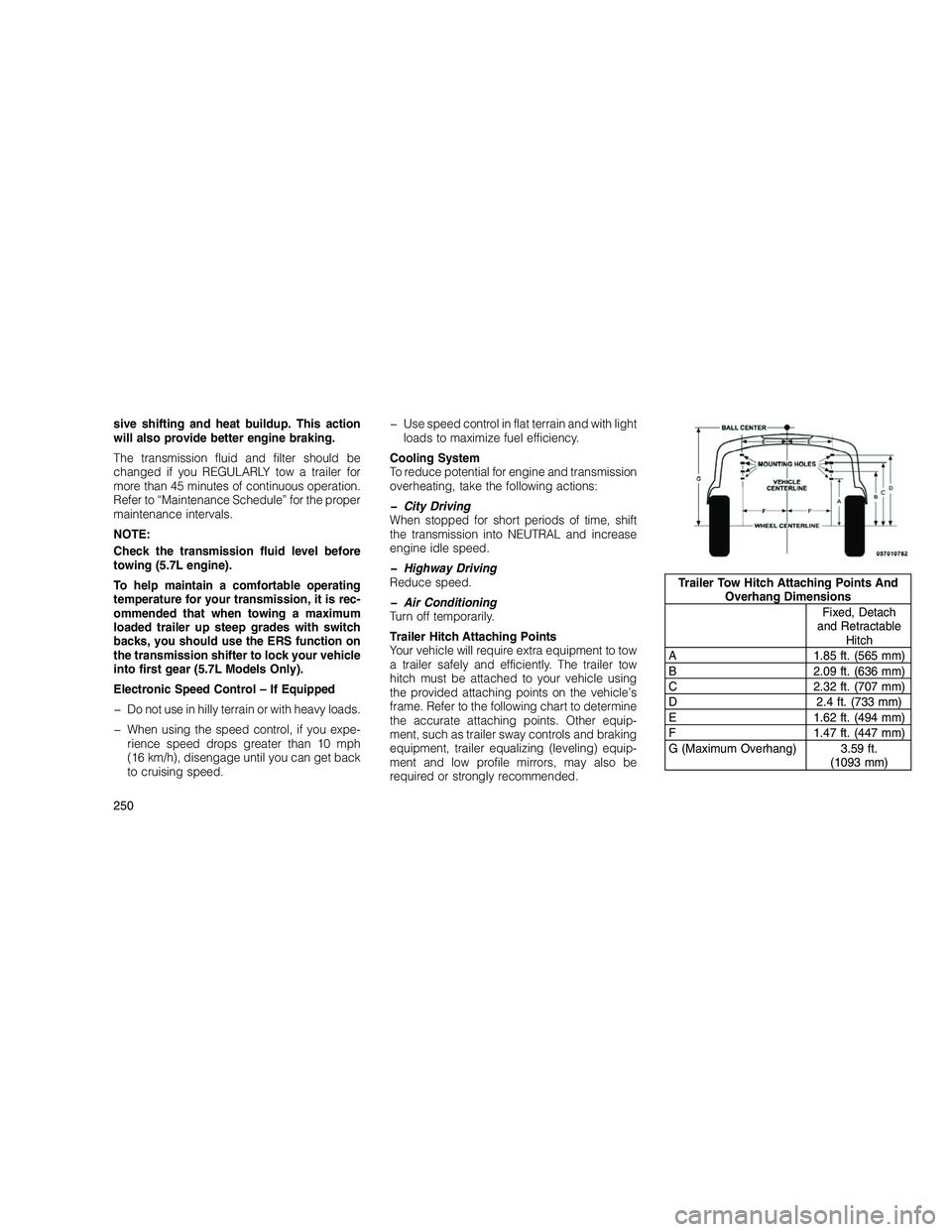sive shifting and heat buildup. This action
will also provide better engine braking.
The transmission fluid and filter should be
changed if you REGULARLY tow a trailer for
more than 45 minutes of continuous operation.
Refer to “Maintenance Schedule” for the proper
maintenance intervals.
NOTE:
Check the transmission fluid level before
towing (5.7L engine).
To help maintain a comfortable operating
temperature for your transmission, it is rec-
ommended that when towing a maximum
loaded trailer up steep grades with switch
backs, you should use the ERS function on
the transmission shifter to lock your vehicle
into first gear (5.7L Models Only).
Electronic Speed Control – If Equipped
� Do not use in hilly terrain or with heavy loads.
� When using the speed control, if you expe-rience speed drops greater than 10 mph
(16 km/h), disengage until you can get back
to cruising speed. � Use speed control in flat terrain and with light
loads to maximize fuel efficiency.
Cooling System
To reduce potential for engine and transmission
overheating, take the following actions:
� City Driving
When stopped for short periods of time, shift
the transmission into NEUTRAL and increase
engine idle speed.
� Highway Driving
Reduce speed.
� Air Conditioning
Turn off temporarily.
Trailer Hitch Attaching Points
Your vehicle will require extra equipment to tow
a trailer safely and efficiently. The trailer tow
hitch must be attached to your vehicle using
the provided attaching points on the vehicle’s
frame. Refer to the following chart to determine
the accurate attaching points. Other equip-
ment, such as trailer sway controls and braking
equipment, trailer equalizing (leveling) equip-
ment and low profile mirrors, may also be
required or strongly recommended.
Trailer Tow Hitch Attaching Points And Overhang Dimensions
Fixed, Detach
and Retractable Hitch
A 1.85 ft. (565 mm)
B 2.09 ft. (636 mm)
C 2.32 ft. (707 mm)
D 2.4 ft. (733 mm)
E 1.62 ft. (494 mm)
F 1.47 ft. (447 mm)
G (Maximum Overhang) 3.59 ft. (1093 mm)
250
